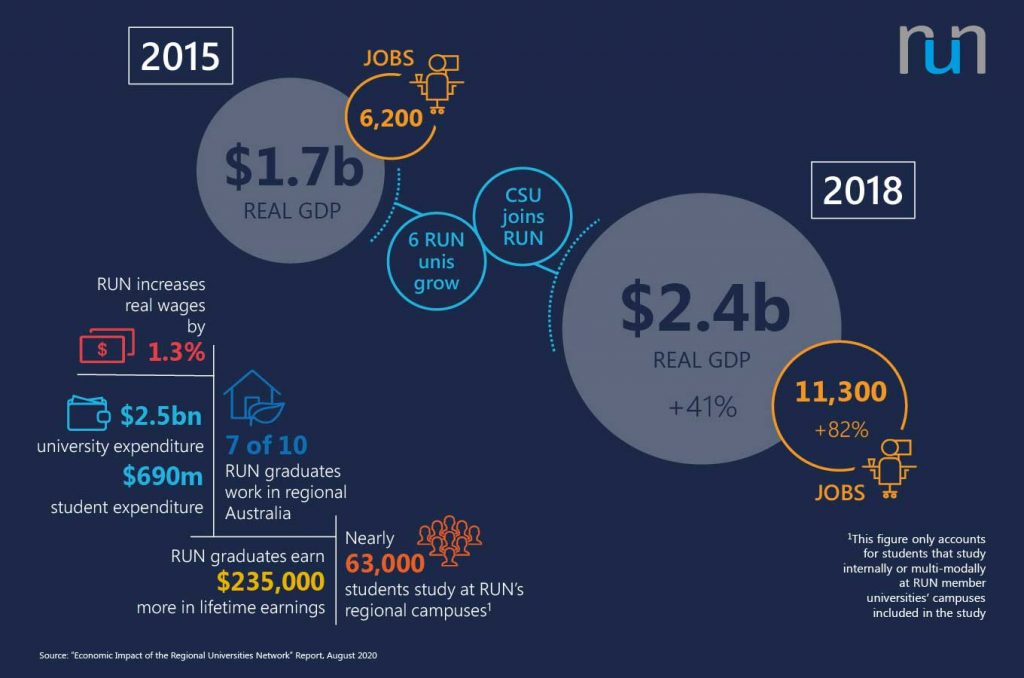Our universities are an integral part of the economic fabric of regional Australia. The latest impact study by Nous Group and the Centre of Policy Studies revealed their significant contribution to regional economies.

Economic impact
Overall, our universities contributed $2.4 billion to real GDP in regional Australia in 2018, which represents an increased contribution to real GDP of nearly $700 million (41 per cent) since 2015:
- Individually, each member university contributes between $199 million and $530 million to real GDP in regional areas.
- RUN students spent more than $690 million in their local regions in 2018, a key contributor to real GDP as it drives demand for goods and services in the regions.
- Our universities’ expenditure plays an important role in supporting employment in regional areas.
- In 2018, our universities had a total combined expenditure of $2.5 billion – most of which was spent in their regional areas.
- In 2018, our universities received $124m in research income and the value of academics’ time was valued at $148m.
Our universities grow regional workforces, enhance regional productivity and deliver the skills training that regional Australia needs:
- Around 11,300 jobs have been created through direct and indirect employment.
- Our universities generate substantial employment in their local communities – creating 11,300 jobs in regional Australia in 2018.
- Many RUN graduates – seven out of 10 – go on to work in regional Australia and they work in industries that have the greatest demand for workers, such as education and health.
- Between 2017 and 2019, 69 per cent of employed RUN bachelor-level graduates and 55 per cent of employed RUN post-graduate level graduates ended up working in regional Australia.
- This translates to around 37,000 RUN domestic graduates working in regional Australia from 2017 to 2019.
- This compares to only 24 per cent for non-RUN bachelor-level graduates and 27 per cent of non-RUN postgraduate-level graduates
Higher education in the regions versus metro cities
There is a significant differential in higher education attainment between city and regional Australians:
- The 2016 Census revealed that 49 per cent of people aged 15 years and over living in greater capital city areas held a bachelor degree or above qualification compared with 30 per cent living outside of the greater capital cities.
- In 2017, almost 45 per cent of people aged 25-34 years in major cities held bachelor degree or above qualifications, while the proportion for those people living in inner and outer regional areas was 20.5 per cent and 20.6 per cent respectively.
The proportion of people with bachelor degrees or above grew strongly across Australia between 2010 and 2017:
- The proportion of people in major cities aged 25-34 years with a bachelor degree or higher rose by five percentage points during this period.
- Among residents of inner regional communities, the proportion aged 25-34 years with a bachelor degree or higher rose by almost two per cent.
- The increase was greater for residents of outer regional and remote communities but fluctuated significantly between years.
RUN-specific statistics
Visit essential statistics and pocket statistics for detailed information on RUN student enrolments, revenue, staff and research data in comparison to all Australian public universities.
